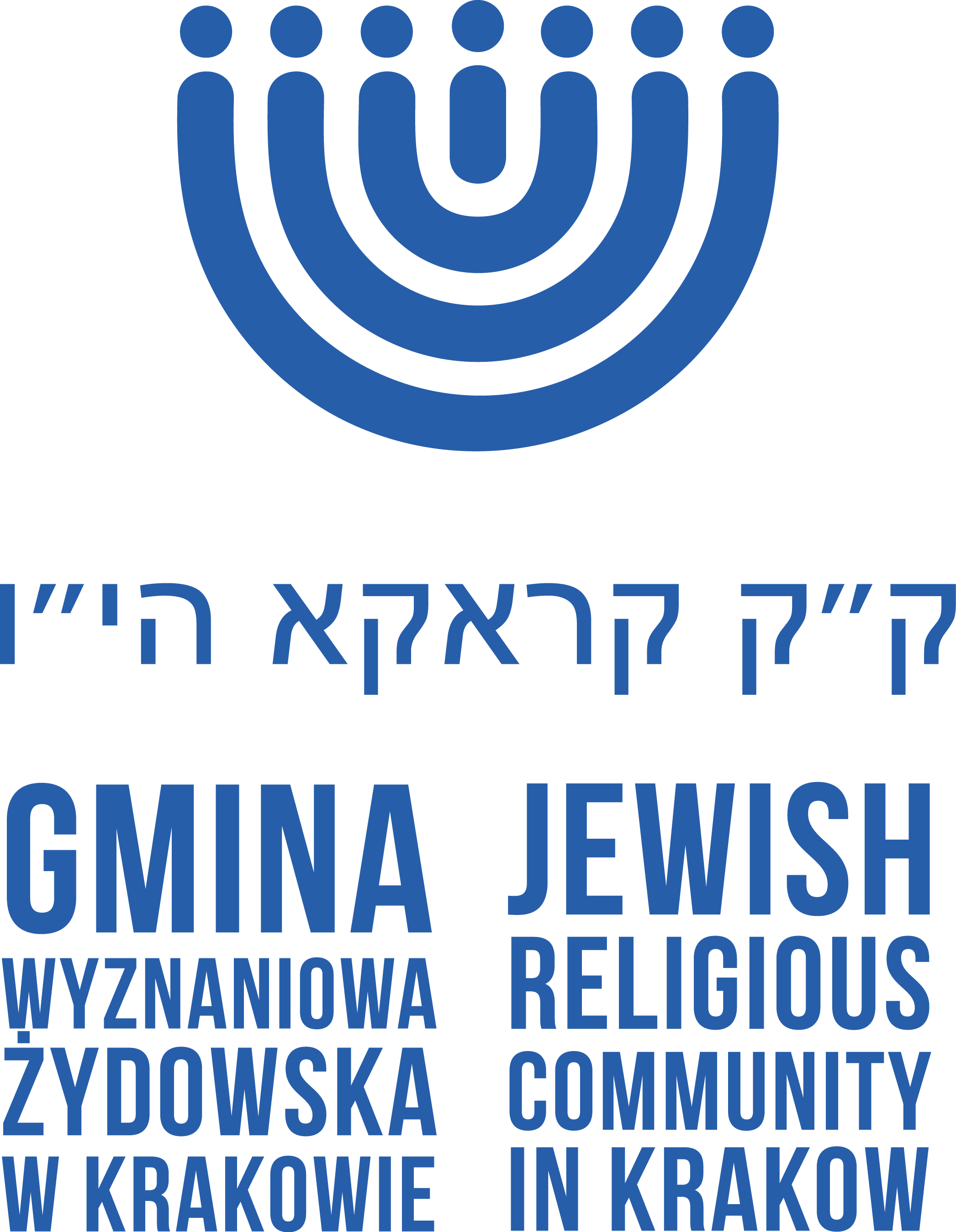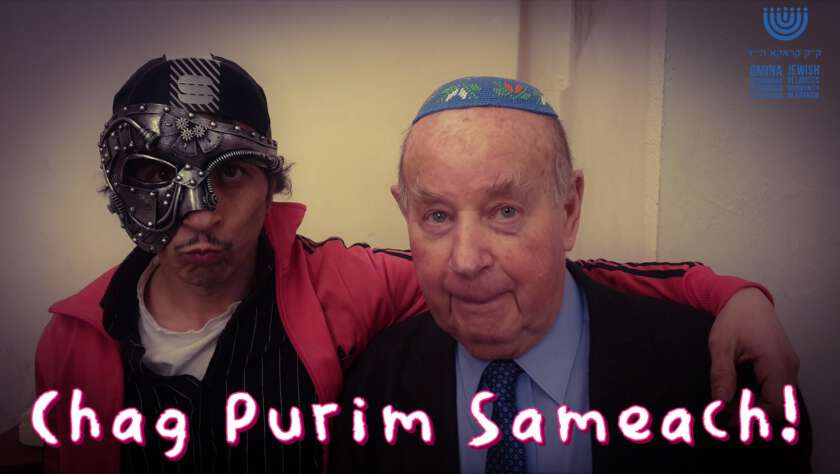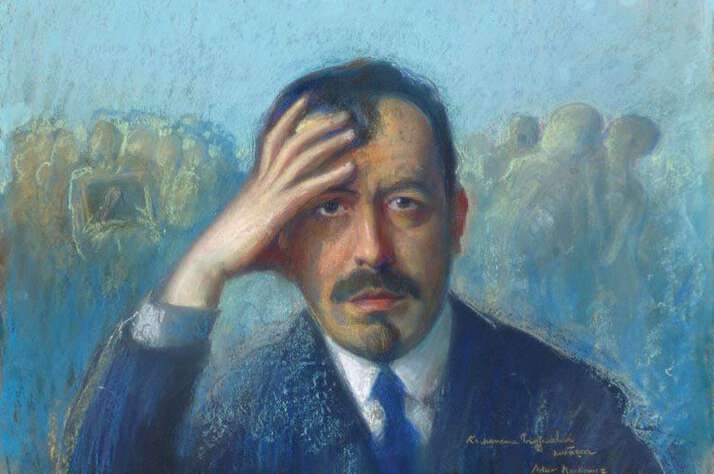Chag Purim Sameach!
Dawid Kahane, born on 15th March 1903 in Grzymałów, was a rabbi with the rank of lieutenant colonel of the Polish Army and a chairman of The Supreme Religious Council in Poland. He came from a family of rabbis who raised him in traditional religious spirit. Kahane studied in Berlin, Wrocław and Vienna, where he obtained his PhD title in Philosophy. He was a student of Israelitisch-Theologische Lehranstalt, too. After his return to Poland, he settled in Lviv. During the war, Dawid Kahane was a member of the Lviv rabbinate, while working at the religious department of Judenrat at the same time. He was a prisoner of the Janovski camp in Lviv. Kahane was saved thanks to Andrzej Szeptycki, the Greek-Catholic Metropolitan. After the war, he…
On 13th March 2022, which marked the 79th anniversary of the liquidation of the Krakow ghetto, Tadeusz Jakubowicz, Chairman of the Board together with the representatives of the Jewish Religious Community in Krakow, laid flowers in places commemorating the extermination of Krakow Jews. The following guests were in attendance: Mayor of Krakow, professor Jacek Majchrowski, Chairman of the Board of the Jewish Religious Community in Katowice, Włodzimierz Kac, President of the Roma Association in Poland, Roman Kwiatkowski, Manager of the Krakow branch of the Institute of National Remembrance, habilitated doctor Filip Musiał as well as numerous Krakow residents. We are grateful for everyone’s presence on that day.
On Saturday, 13th March 1943, the Germans began the final liquidation of the Krakow ghetto. First, the ghetto was cordoned off by SS divisions, Police, Sonderdienst and the Blue police. Jews from the A ghetto were supposed to walk to Płaszów, while those from ghetto B were to be killed, despite being promised a relocation to Julag I. During the two-day operation, the SS men murdered a few hundred people located in shelters, hospitals and orphanages. Their corpses were transported to Płaszów, where other people, considered ”useless”, were being shot dead. The official total number of 2,000 victims killed in both, the ghetto as well as in Płaszów, does not seem to be exaggerrated, as the original number of 8,000 people who arrived at the camp increased…
12th March 1682, marked in history as ”der grosjer Schülergeläuf”, was a day of serious anti-Jewish riots in Cracow. Janina Bieniarzówna thoroughy described these events in Volume 2 of Dzieje Krakowa (The history of Cracow) as well Majer Bałaban, in Volume 2 of Historia Żydów w Krakowie i na Kazimierzu 1304-1868 (The history of Jews in Cracow and in the Kazimierz District 1304-1868) It all stemmed from a Szachna who was sentenced to death by hanging, as a consequence of buying stolen ecclesiastical silverware. After executing the sentence, a group of students attacked and severly beat the Jews. Soon after that, other anti-Jewish riots broke out. The Jews took shelter in the Szara tenement house, while students, supported by local thugs, tried to break in there. As…
Artur Markowicz , a painter and a graphic designer was born on 3rd March 1872 in Podgórze (currenty, a district in Cracow). After graduating from gymnasium, Markowicz began his studies at the Institute of Technology in Cracow, yet dropped out soon after. Between 1886-1895 he was studying at the School of Fine Arts where he got his education from Leopold Löffler, Władysław Łuszczkiewicz, Florian Cynk and Jan Matejko. From 1896 Markowicz continued his education at the Academy of Fine Arts in Munich, receiving further education from Franz von Stuck. Between 1900-1904 he was studying at the École des Beaux-Arts in Paris, in Jean-Léon Gérôme’s class. After returning to Poland, he lived in Tarnów for a short while, only to move to Cracow afterwards. His studio was located…
Jonatan Warschauer, born on 2nd March 1820 in Cracow, was a doctor and a community activist. He was a graduate of St. Ann’s Gymnasium. After finishining the Faculty of Medicine at the Jagiellonian University in 1843, Warschauer ran his own medical practice. He published his works in ”Tygodnik Lekarski”(Doctor’s Weekly), ”Pamiętnik Lekarski Warszawski” (Doctor’s Journal / Warsaw), ”Przegląd Lekarski”(Doctor’s Review) as well as in ”Rocznik Towarzystwa Lekarzy Polskich w Paryżu” (A Yearbook of the Polish Doctors Society in Paris). As a keen supporter of Polish independence and the assimilation of Polish Jews, he supported the Uprising in Cracow, which resulted in his imprisonment. The author of a brochure entitled ”O spolszczeniu Żydów galicyjskich” (About making the Galicia Jews Polish) published in 1882. A member of Cracow City…
29 th February marks the death anniversary of Józef Oppenheim. Murdered in 1946, Oppnheim was the Head of the Tatra Mountain Ambulance Service. His wife, Wanda, was an eye witness of this disgraceful event. According to her testimony, on 25th February someone knocked on their door and asked about ”the Head of the Tatra Mountain Ambulance”. After being refused the entry, they came back 4 days later, on 29th February. Oppenheim let the people in. They ordered him to lift his hands up, saying ”We are from Home Army. We know your beliefs and we know you are the Head of the Tatra Mountain Ambuance Service”. When Oppenheim was trying to close the door, he was shot dead by Karol Lasak. Following this event, Tadeusz Murańka shot…
On 28th February 1871, Wilhelm Fraenkel and Maria, neé Liban, welcomed a son, Henryk Fraenkel, a future industrialist and philanthropist. Fraenkel got his education at St.Jack’s Gymnasium in Cracow, followed by various trade courses. Fraenkel took up a job at his father’s company soon after. In 1890 he got transferred to Bernard Liban Cement Factory in Bonarka where got promoted to General Manager. What is more, Fraenekel was one of the founders of the Austrian cement cartel as well as a co-founder of the Factory of Fire-Clay Ceramics and Faience in Skawina. From 1905 he held the position of a councellor of the city of Podgórze. In 1913 Fraenkel joined the Rifflemen Association, yet his poor health prevented him from taking part in battles. Instead, he was…










